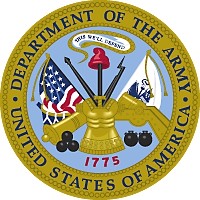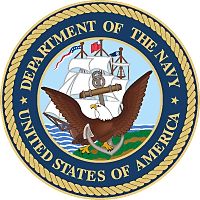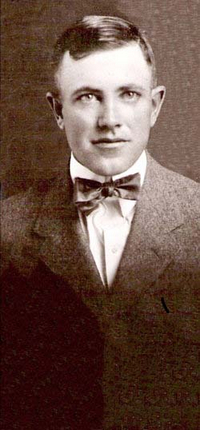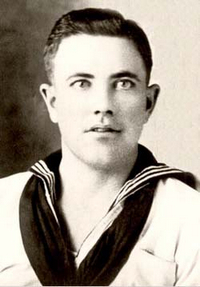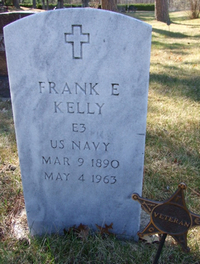Skip to content
Francis "Frank" Elmer Kelly
Lilah Crowe2020-06-27T08:05:36-05:00
- Name: Francis "Frank" Elmer Kelly
- Location of Birth: Masonville, Iowa
- Date of Birth: March 9, 1890
- Date of Death: May 4, 1963 (73 years old)
- Parents: Peter Joseph and Margaret (Reidy) Kelly
- High School and Class:
- College:
- Highest Rank: CPL (Corporal)
- Branch: Army
- Other Branch: Navy
- Date Sworn In: July 23, 1918
- Place Sworn In: Redfield, South Dakota
- Date of Discharge:
- Place of Discharge:
-
- Military Awards:
- Military Highlights:
Frank served with the United States Navy from 1912-1916.
He then served with the United States Army from 1918-1919.
Frank was 28 years old when he enlisted, his occupation was an electrician, he had blue eyes, brown hair, a ruddy complexion, and was 5' 7" in height.
He served with Company 46 Depot Brigade from July 24, 1918 to October 22, 1918 and Headquarters Company 87th Infantry 19th Division from October 1918 to his discharge.
Up In This Neck Of The Woods article written by L. A. Rossman on June 14, 1944 (Grand Rapids Herald Review):
"When Frank Kelly of Grand Rapids read a recent Neck of the Woods column about the Vera Cruz incident in Mexico, some thirty years ago, in which C. C. Wilcox of Grand Rapids was wounded, he was much interested. When he read all the way through, and saw where it was stated that Mr. Wilcox was the only man in this section of the country who took part in the engagement, he rose right up in his bed at the Itasca hospital and said "Why, they can't do that to me. Wasn't I there, and haven't I got a medal for the part I took in that battle?
A visit with Mr. Kelly at the hospital, where he was recovering from an operation for hernia, indicated that he really had taken part in that battle of Vera Cruz-and had seen plenty of action, though Mr. Wilcox was unaware of the fact that a local resident faced the bullets of the Mexicans there. Mr. Kelly enlisted in the Navy in 1912. He was a sailor on the battleship Vermont. Other ships in the fleet, which went to Vera Cruz to compel recognition and an apology included the Minnesota, New Hampshire, on which Victor Dahl, who formerly lived in Grand Rapids, was serving, the South Carolina, the Michigan, the Chester and others.
Knowing that they would probably see land fighting in Mexico, the sailors were instructed to dye their white uniforms khaki color with the use of permanganate of potassium, while on the way to Vera Cruz. Mr. Kelly was ashore for ten days, fighting the Mexicans back into the hills. Four members of his company were killed, but he escaped without a scratch. After the Mexicans in the armory building had fired on the sailors, orders were given to shell the armory. The chief gun-pointer on the Chester was a man named Zoller, who for many years, has been operating a lumberyard in Fargo. When the shelling from the Chester was completed, over 400 dead Mexicans were carried out of that wrecked armory.
Frank Kelly has had an adventurous career. Ending his four years with the Navy in 1916, he entered civil life for a year. When this country was drawn into World War One, he enlisted in the signal corps as he had been an electrician's mate in the Navy. He served in this country and in France, being discharged some time after the armistice was signed.
Too old to enlist when Pearl Harbor shocked America in this war, as he is now 54 years of age, Mr. Kelly was not too old to engage in vital defense work. He went to Newfoundland, where for a year he worked on construction of an air base for the United States. He rather liked Newfoundland, with its mixture of old and new. He rode in a rig drawn by oxen to attend Christmas festivities in a little Newfoundland church. He was pleasantly surprised by the mild weather, the mercury only reaching six below in the year he was there. Not far from where he worked was the town of Grand Falls, where there is the largest paper mill in the world.
Returning home, Kelly was invited, after a brief stay with his family, to help build an emergency landing field on the shore of Hudson Bay, north of Churchill. The weather there was really cold, the thermometer recording as low as 65 below zero, with 50 below not at all unusual. Dog derbies were run late in April; and trappers who lived there the year
round said that the ice and snow never all melted.
Back home again for a short time, Kelly shipped out once more, this time to help build camps on the Alaskan highway. He went by plane from Edmonton to Whitehorse, covering the distance in a few hours. On his return home, after six months in Alaska, he took advantage of an opportunity to ride down from Whitehorse to Edmonton with the drivers of an Army truck. He believes that the new Alcan highway is one of the most scenic in the world, "with its mountains, rivers, plains, and other features, and that it will be popular with tourists once travel is no longer restricted.
About to ship out again this time for an unnamed destination in the Aleutians to help build an airbase, an Army major, a surgeon giving the men a final physical examination at Seattle before they boarded the ship, found that Mr. Kelly had a hernia which he had not suspected, and ordered him home. As soon as he recovers his health following his recent operation, this man who has seen every province in Canada and most of the states in this country expects to ship out again."
- Wars Involved:
Mexican Conflict
World War I
- MIA / POW:
- Civilian Life:
Frank moved to Grand Rapids, Minnesota in 1934. He worked construction.
Frank was a member of St. Joseph's Catholic Church, American Legion, VFW, and Itasca Barracks 2504 World War I Vets in Grand Rapids, Minnesota.
Mr. and Mrs. Kelly and their family came to Cohasset, Minnesota in 1934 from Yellow Medicine County, Minnesota. He was a carpenter and continued in construction work until his retirement a number of years ago. After three years in Cohasset, the family came to Grand Rapids, Minnesota.
Mr. Kelly was active in the activities of the service units and was especially fond of attending conventions and participating in parades.
Survivors are his wife, Dorothy; three daughters, Mrs. Gene Roth, Mrs. Wilfred LaDoux, and Mrs. Michael Murphy; two sons, Richard Kelly and Dr. Daniel Kelly; six sisters, Mrs. Al Dressler, Mrs. Joseph Hauptman, Mrs. Edmund Roupe, Mrs. Harry Place, Ven. Sister Ricardo, and Mrs. Theodore Beare; two brothers, John and George.
Buried in Wildwood Cemetery at Cohasset, Minnesota.
- Tribal Affiliation(s):
Page load link
